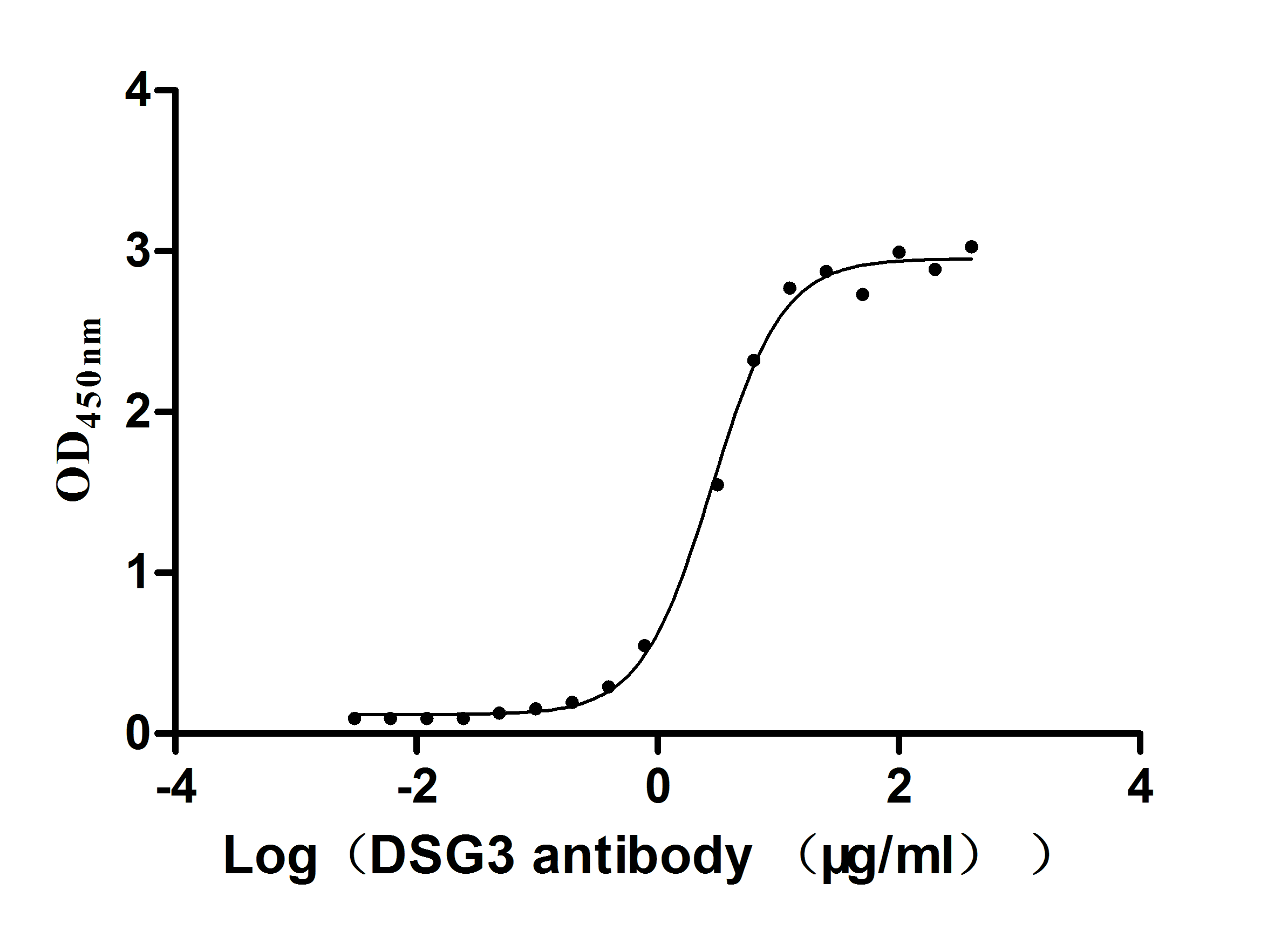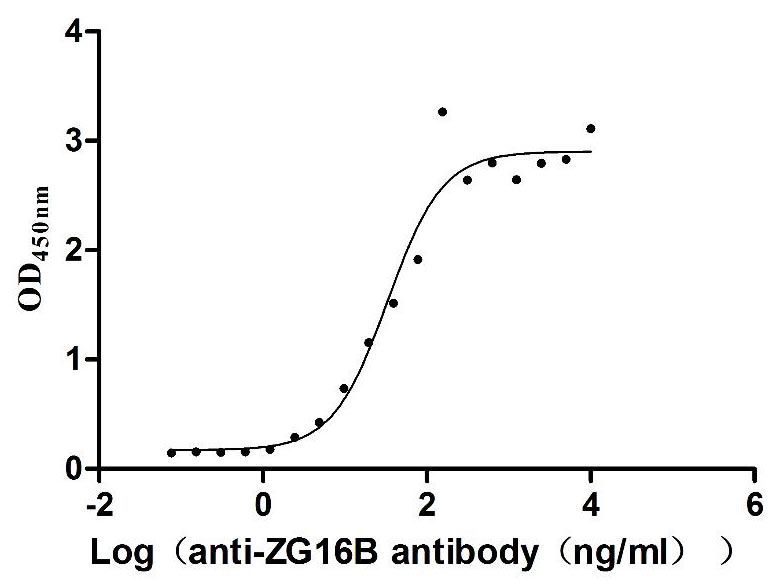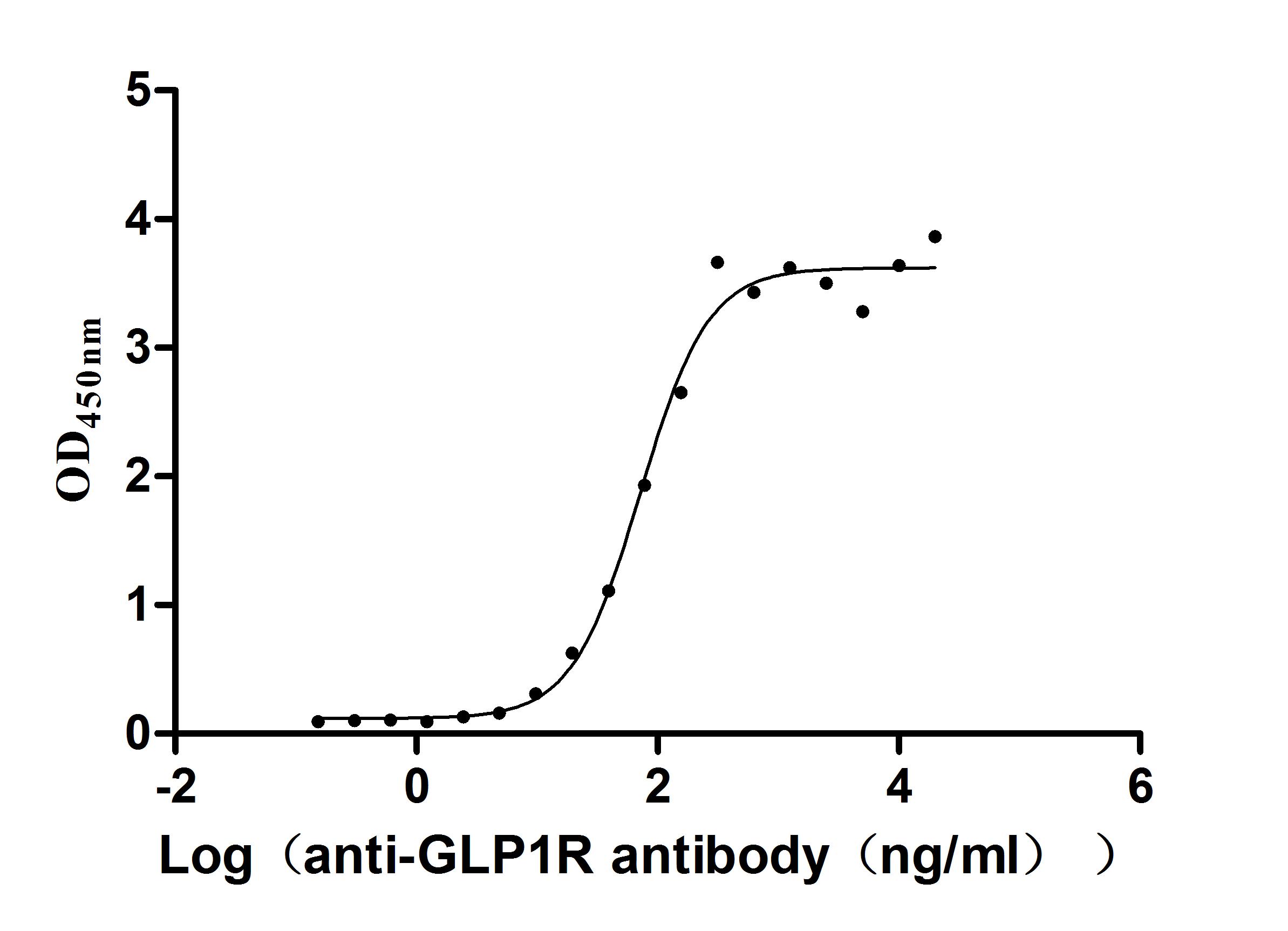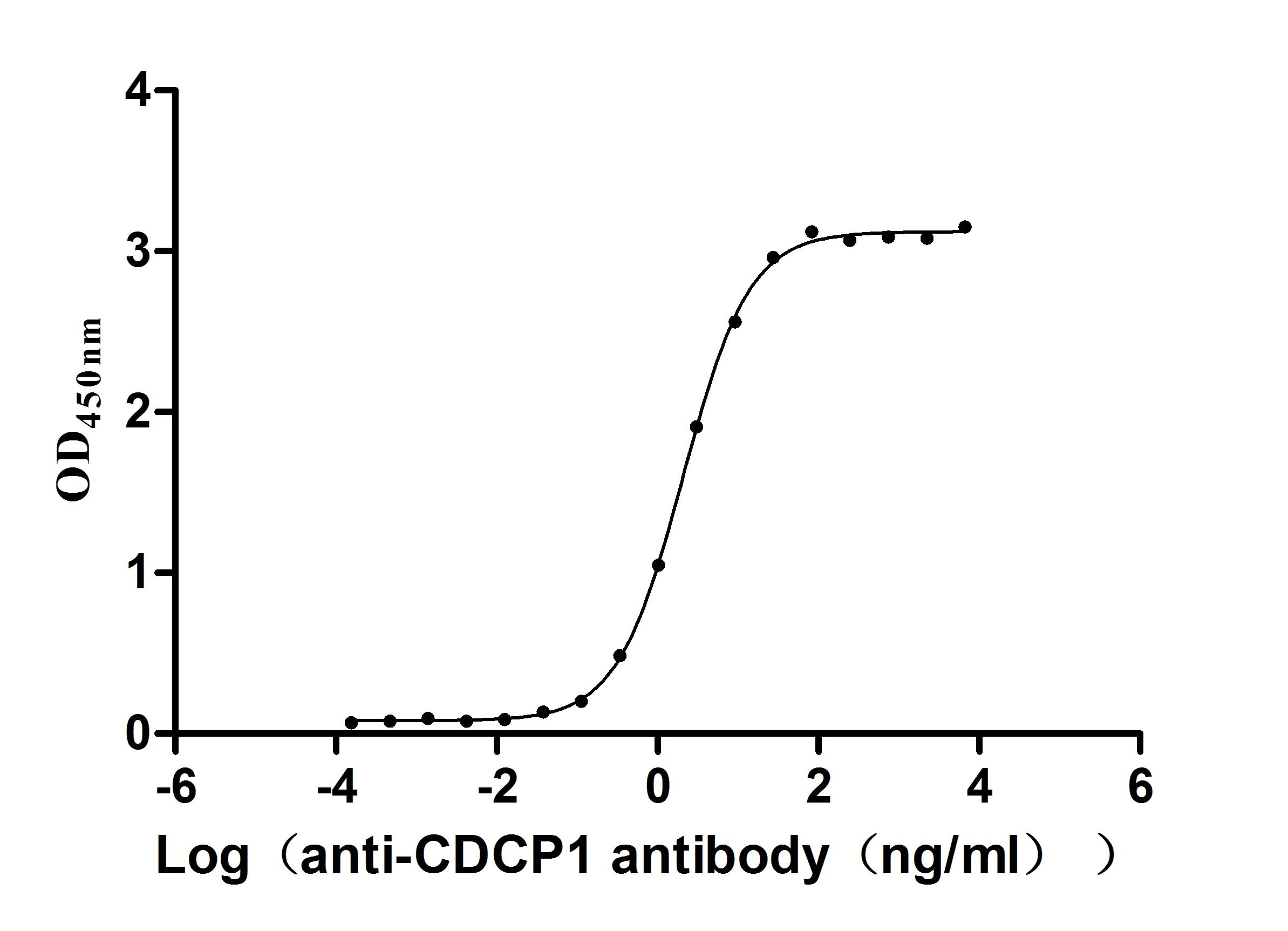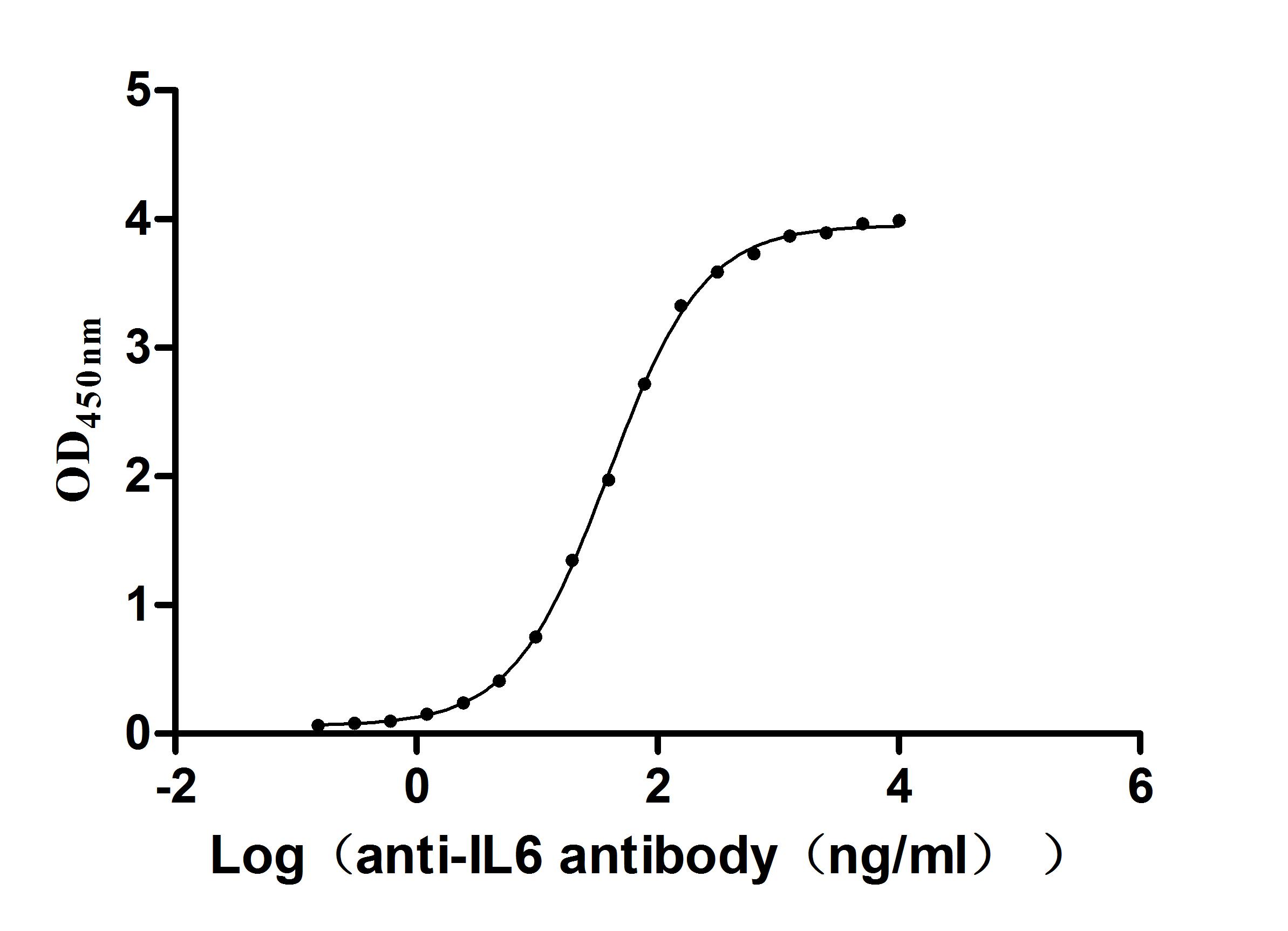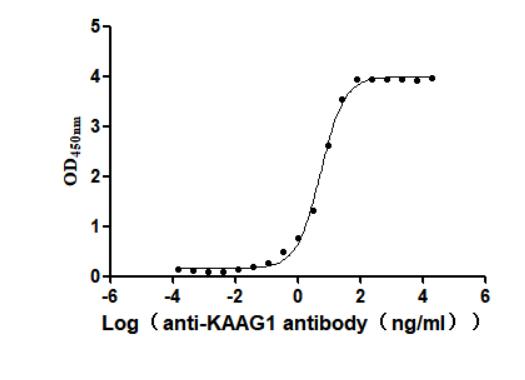Recombinant Human Inter-alpha-trypsin inhibitor heavy chain H5 (ITIH5), partial
-
中文名稱(chēng):人ITIH5重組蛋白
-
貨號(hào):CSB-YP768213HU
-
規(guī)格:
-
來(lái)源:Yeast
-
其他:
-
中文名稱(chēng):人ITIH5重組蛋白
-
貨號(hào):CSB-EP768213HU-B
-
規(guī)格:
-
來(lái)源:E.coli
-
共軛:Avi-tag Biotinylated
E. coli biotin ligase (BirA) is highly specific in covalently attaching biotin to the 15 amino acid AviTag peptide. This recombinant protein was biotinylated in vivo by AviTag-BirA technology, which method is BriA catalyzes amide linkage between the biotin and the specific lysine of the AviTag.
-
其他:
-
中文名稱(chēng):人ITIH5重組蛋白
-
貨號(hào):CSB-BP768213HU
-
規(guī)格:
-
來(lái)源:Baculovirus
-
其他:
產(chǎn)品詳情
-
純度:>85% (SDS-PAGE)
-
基因名:ITIH5
-
Uniprot No.:
-
別名:ITIH5; KIAA1953; PP14776; UNQ311/PRO354; Inter-alpha-trypsin inhibitor heavy chain H5; ITI heavy chain H5; ITI-HC5; Inter-alpha-inhibitor heavy chain 5
-
種屬:Homo sapiens (Human)
-
蛋白長(zhǎng)度:Partial
-
蛋白標(biāo)簽:Tag?type?will?be?determined?during?the?manufacturing?process.
The tag type will be determined during production process. If you have specified tag type, please tell us and we will develop the specified tag preferentially. -
產(chǎn)品提供形式:Lyophilized powder
Note: We will preferentially ship the format that we have in stock, however, if you have any special requirement for the format, please remark your requirement when placing the order, we will prepare according to your demand. -
復(fù)溶:We recommend that this vial be briefly centrifuged prior to opening to bring the contents to the bottom. Please reconstitute protein in deionized sterile water to a concentration of 0.1-1.0 mg/mL.We recommend to add 5-50% of glycerol (final concentration) and aliquot for long-term storage at -20℃/-80℃. Our default final concentration of glycerol is 50%. Customers could use it as reference.
-
儲(chǔ)存條件:Store at -20°C/-80°C upon receipt, aliquoting is necessary for mutiple use. Avoid repeated freeze-thaw cycles.
-
保質(zhì)期:The shelf life is related to many factors, storage state, buffer ingredients, storage temperature and the stability of the protein itself.
Generally, the shelf life of liquid form is 6 months at -20°C/-80°C. The shelf life of lyophilized form is 12 months at -20°C/-80°C. -
貨期:Delivery time may differ from different purchasing way or location, please kindly consult your local distributors for specific delivery time.Note: All of our proteins are default shipped with normal blue ice packs, if you request to ship with dry ice, please communicate with us in advance and extra fees will be charged.
-
注意事項(xiàng):Repeated freezing and thawing is not recommended. Store working aliquots at 4°C for up to one week.
-
Datasheet :Please contact us to get it.
相關(guān)產(chǎn)品
靶點(diǎn)詳情
-
功能:May act as a tumor suppressor.
-
基因功能參考文獻(xiàn):
- ITIH5 may represent a novel modulator of TGF-beta superfamily signaling. PMID: 28940371
- Results provide evidence that ITIH5 triggers a reprogramming of breast cancer cells through global epigenetic changes effecting DAPK1. ITIH5 may represent an ECM modulator in epithelial breast tissue mediating suppression of tumor initiating cancer cell characteristics which are thought being responsible for the metastasis of breast cancer. PMID: 28231808
- Low ITIH5 expression is associated with liver metastasis in pancreatic cancer. PMID: 28289921
- This is the first study so far showing a putative tumor suppressive function of ITIH5 in cervical carcinogenesis. PMID: 28059468
- The current study describes a novel mechanism linking the TSG-6 transfer of the newly described HC5 to the HA-dependent control of cell phenotype. The interaction of HC5 with cell surface HA was essential for TGFbeta1-dependent differentiation of fibroblasts to myofibroblasts, highlighting its importance as a novel potential therapeutic target. PMID: 27143355
- ITIH5 may be a novel putative tumor suppressor gene in NSCLC with a potential molecular significance in the squamoid ADC subtype and further clinical impact for risk stratification of adenocarcinoma patients. PMID: 26252352
- Hence, we can strengthen the presumption that ITIH5 may constitute a novel regulatory molecule of the human skin that could play an important role in in fl ammation via its interaction with hyaluronic acid. PMID: 25809190
- ITIH5 expression is decreased in gastric cancer and that low expression of this protein is associated with poor clinical outcome. PMID: 24913813
- ITIH5 is a novel putative tumor suppressor gene in colon cancer with a potential impact in the CIMP-related pathway. PMID: 25093535
- Tumor-specific methylation of the three-gene panel (ITIH5, DKK3, and RASSF1A) might be a valuable biomarker for the early detection of breast cancer. PMID: 23320751
- provide evidence that down-regulation of ITIH5 by aberrant DNA hypermethylation may provoke invasive phenotypes in human bladder cancer PMID: 24265292
- ITIH5 gene expression is regulated both by obesity and by the region between visceral and subcutaneous adipose tissue. PMID: 22616691
- ITIH-5 is highly expressed in sc adipose tissue, increased in obesity, down regulated after weight loss, and associated with measures of body size and metabolism. PMID: 21852814
- expression is consistantly lost or strongly downregulated in invasive ductal carcinoma; proposed that loss of ITIH5 expression may be involved in breast cancer development PMID: 14744536
- Promoter methylation-mediated loss of ITIH5 expression is associated with unfavourable outcome in breast cancer patients. PMID: 17653090
- Both ITIH5 protein expression and ITIH5 promoter methylation may serve as prognostic biomarkers, thereby helping improve clinical patient outcome. PMID: 18810445
顯示更多
收起更多
-
亞細(xì)胞定位:Secreted.
-
蛋白家族:ITIH family
-
組織特異性:Abundantly expressed in placenta. Less abundant expression in mammary gland and ovary. Expression is barely detectable levels in all other tissues tested.
-
數(shù)據(jù)庫(kù)鏈接:
Most popular with customers
-
Recombinant Mouse Desmoglein-3 (Dsg3), partial (Active)
Express system: Mammalian cell
Species: Mus musculus (Mouse)
-
Recombinant Human Zymogen granule protein 16 homolog B (ZG16B) (Active)
Express system: Mammalian cell
Species: Homo sapiens (Human)
-
Recombinant Human Glucagon-like peptide 1 receptor (GLP1R), partial (Active)
Express system: Mammalian cell
Species: Homo sapiens (Human)
-
Recombinant Human Desmoglein-2 (DSG2), partial (Active)
Express system: Mammalian cell
Species: Homo sapiens (Human)
-
Recombinant Macaca fascicularis CUB domain containing protein 1 (CDCP1), partial (Active)
Express system: Mammalian cell
Species: Macaca fascicularis (Crab-eating macaque) (Cynomolgus monkey)
-
Recombinant Human Carcinoembryonic antigen-related cell adhesion molecule 8(CEACAM8) (Active)
Express system: Mammalian cell
Species: Homo sapiens (Human)
-
-
Recombinant Human Kidney-associated antigen 1(KAAG1) (Active)
Express system: Baculovirus
Species: Homo sapiens (Human)


